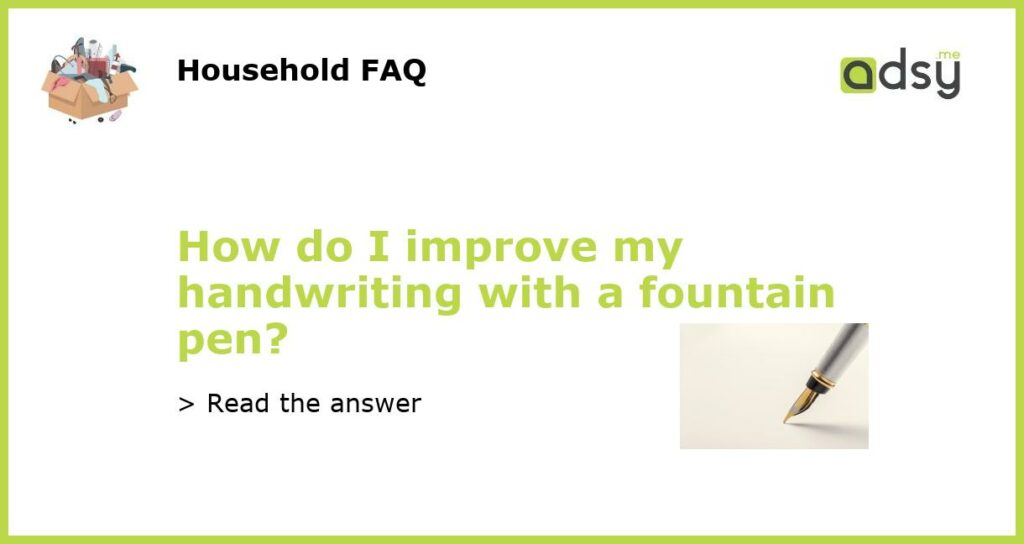Why use a fountain pen for better handwriting?
Handwriting is an important life skill that is often overlooked in today’s digital age. Using a fountain pen can help improve your handwriting by providing a consistent flow of ink, a comfortable grip, and precision control. Unlike ballpoint pens that require hard pressure to write, fountain pens require a lighter touch, making it easier to form smooth, flowing letters.
Choose the right pen and ink
When selecting a fountain pen, it is important to find one that feels comfortable in your hand and provides a consistent ink flow. Fine or extra fine nibs are recommended for those with smaller handwriting, while medium nibs are best for larger handwriting. Additionally, choosing the right ink can also affect your handwriting. Water-based inks typically allow for smoother, more consistent handwriting and are easier to clean from your pen
Practice makes perfect,
Like any skill, improving your handwriting takes practice. Start by practicing basic strokes and letter formation. Focus on developing a consistent slant, size, and spacing between letters. Using lined paper or a handwriting grid can also help to improve your form.
Experiment with different writing styles
Fountain pens allow for a wide range of writing styles, from cursive to calligraphy. Experimenting with different styles can help refine your skills and add a personal touch to your handwriting. Online resources like The Calligraphy Spot or JetPens offer helpful tutorials and tips to get you started.
Make writing a habit
The more you write, the more you will improve your handwriting with a fountain pen. Make it a habit to write in a journal or notebook daily. Even a few minutes of practice each day can make a significant difference in the quality of your writing. Additionally, try using your fountain pen to write personal letters or cards to friends and family to add a personal touch to your correspondence.






